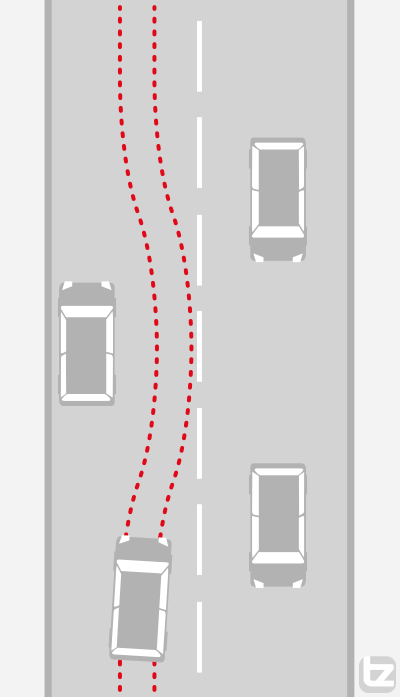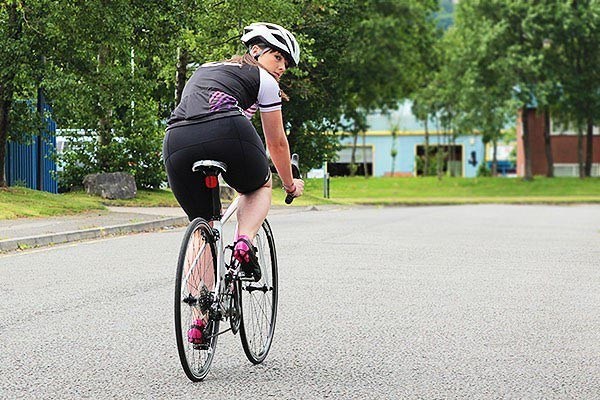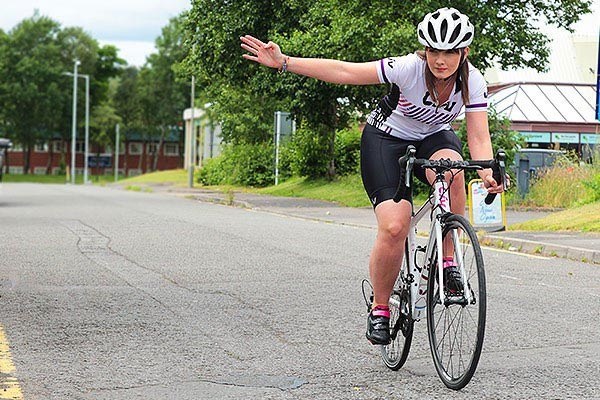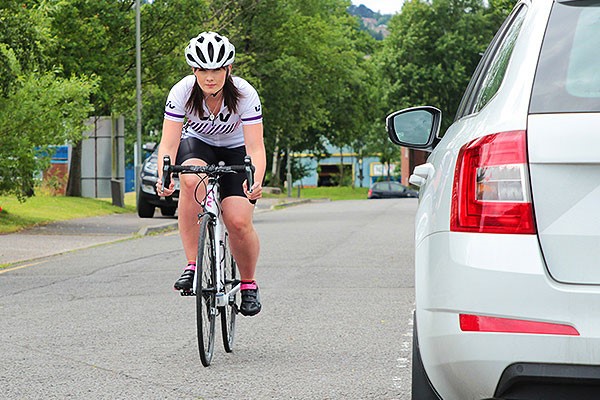Cycle in the moving traffic lane
One of the most important techniques for confident urban cycling is learning how to position yourself properly in the moving traffic lane.
The moving traffic lane is the part of the road that the traffic is moving in at the present moment. It meanders past parked vehicles and doesn’t necessarily coincide with any markings on the road. Cycling in the middle of the leftmost moving traffic lane is known as the primary cycling position and is one of the best cycling tips to improve your road safety.
What is the advantage of cycling in the middle of the moving traffic lane?
Adopting the primary cycling position in the middle of the moving traffic lane has two main safety advantages;
1. You become much more visible to other road users.
2. You prevent following traffic overtaking you when it is unsafe to do so.
This means that you have much more control over your own safety on the roads. This will increase your confidence as well as improving your safety.
Remember that very few accidents happen when a driver can see a cyclist but fails to avoid them. Adopting the primary position in the moving traffic lane will make you safer as it is much easier for drivers to see you.
When you take up the primary cycling position imagine how much room a car would need and position yourself in the middle of that space.

When should I adopt the primary cycling position?
The Primary position, in the middle of the moving traffic lane, is the safest place to be whenever it is unsafe for vehicles to overtake. This should be your normal riding position; whenever you need to emphasise your presence to traffic ahead or when you need to prevent following drivers from overtaking you.
When it is safe for other vehicles to overtake then you can adopt the secondary position. This is just to the left of the moving traffic lane or at least 50cm away from the curb. Remember you never need to ride in the gutter and you have as much right to use the whole road as motor vehicles.
- When cycling past parked cars
- While passing or turning at a junction
- At a pinch point in the road
- On narrow winding roads
- On roundabouts
How do I move into the moving traffic lane?
When moving into the primary position on the moving traffic lane give yourself plenty of time to move into the primary position by looking ahead to anticipate the traffic conditions.
1. Anticipate
Look ahead as far as you can so that you can anticipate when you will need to change your road positioning.
2. Look back
Looking over your right shoulder is important as it signals to following drivers that you are about to do something. Of course it will also allow you to see the traffic behind you.
3. Find a safe space in the moving traffic lane
You don’t need to wait until all the traffic has passed, just find a gap that is large enough for you to move into safely.
4. Signal your intent
Let the following traffic know you are about to move by signalling. A clear arm signal is most obvious but, depending on traffic conditions, a look over your shoulder will often be adequate.
5. Move smoothly into the moving traffic lane
When you move do it quickly and smoothly. A quick burst of acceleration will make this process easier.
6. Once safe, go back to secondary position
Give a quick look over your left shoulder (to make sure that another cyclist isn’t sneaking up your inside) and move over. There is no need to signal here as following motorists will be able to see you clearly and will anticipating your move to the left.

Practice on quiet roads first
When learning any new road safety cycling techniques, it is best to try them out on quiet roads first. This means that you will be familiar with them before you move out on to busy roads.
What can I practice on quiet roads?

Looking back
To ride confidently on busy roads, you will need to be able to look over your right shoulder while cycling in a straight line. Some cyclists find it easier to take their right hand off the handlebars when they do this. Try it a few times until you find a comfortable technique.

Signalling
Cycling in a straight line with one hand off the bars is an important skill to master. You can practice this gradually if you like, starting with just hovering your hand above the bars before moving up to full straight arm signalling.

Overtaking parked cars
Once you are happy with looking back and signalling, practice the whole procedure by imagining the moving traffic lane as you pass parked cars on quiet roads. You can look back, signal and position yourself in the middle of where the moving traffic lane would be on a busy road.
Build your confidence
Improving your road positioning is one of the most important skills you can master as this is how you exert greatest influence on your road safety in traffic. Once you get the hang of cycling safely in the moving traffic lane you will feel much more confident when you ride in busy traffic.
